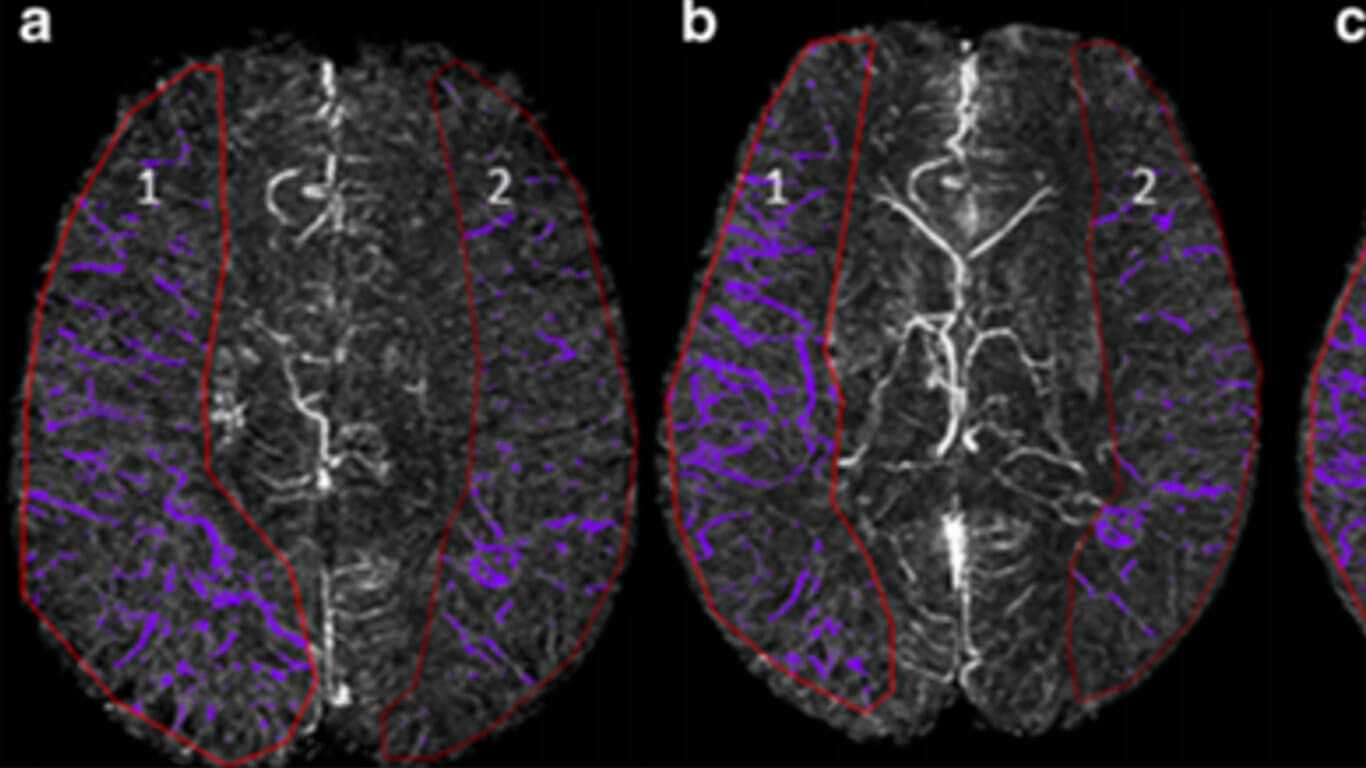
Increased susceptibility of asymmetrically prominent cortical veins correlates with misery perfusion in patients with occlusion of the middle cerebral artery
By: Karen Holzberger, President & CEO of SpinTech MRI
Author(s): Yu Luo1 & Zhongying Gong2 & Yongming Zhou1 & Binge Chang3 & Chao Chai4 & Taiyuan Liu5 & Yanhong Han5 & Meiyun Wang5 & Tianyi Qian6 & E Mark Haacke 7 & Shuang Xia4
Journal: European Radiology
Published: 2017
Read Full Paper: https://link.springer.com/article/10.1007%2Fs00330-016-4593-y
Abstract

Objectives
To evaluate tissue perfusion and venous susceptibility in ischaemic stroke patients as a means to predict clinical status and early prognosis.
Methods
A retrospective study of 51 ischaemic stroke patients were enrolled in this study. Susceptibility, perfusion and National Institute of Health stroke scale (NIHSS) were compared between patients with and without asymmetrically prominent cortical veins (APCVs). The correlation between susceptibility, perfusion and NIHSS was performed.
Results
Compared to patients without APCVs, the age of patients with APCVs was statistically older (p = 0.017). Patients with APCVs at discharge showed clinical deterioration in their NIHSS. Mean transit time (MTT), time to peak (TTP) and cerebral blood flow (CBF) in the stroke hemisphere were statistically delayed/decreased in patients with and without APCVs (all p < 0.05). In patients with APCVs, the changes in susceptibility positively correlated with increases in MTT and TTP (p < 0.05). Susceptibility and TTP positively correlated and CBF negatively correlated with NIHSS both at admission and discharge (p < 0.05).
Conclusions
Patients with APCVs have a tendency of deterioration. The presence of APCVs indicates the tissue has increased oxygen extraction fraction. Increased susceptibility from APCVs positively correlated with the delayed MTT and TTP, which reflects the clinical status at admission and predicts an early prognosis.

